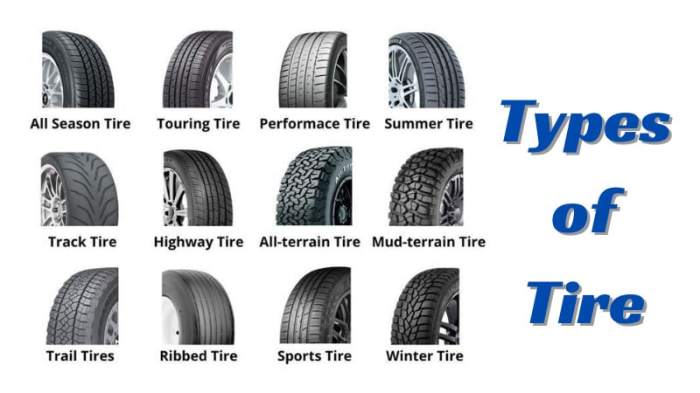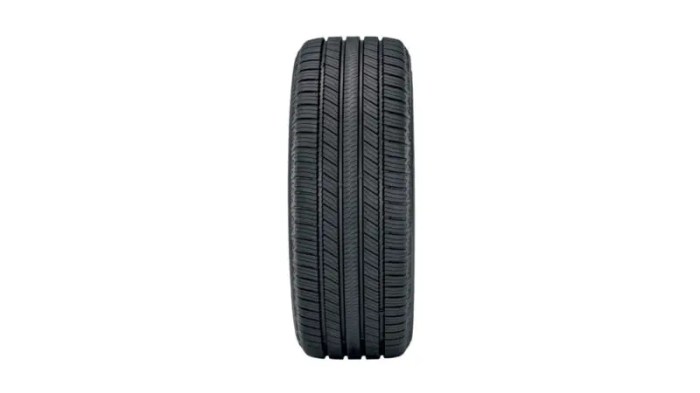Car tire types explained, this guide takes you on an informative journey through the various types of tires available for your vehicle, emphasizing the significance of choosing the right one to enhance your driving experience. Understanding the nuanced characteristics of each tire type can greatly impact your vehicle’s performance, safety, and efficiency on the road.
Browse the multiple elements of Mazda sports car horsepower to gain a more broad understanding.
From all-season to winter, summer, performance, and off-road tires, each category serves unique purposes that cater to different driving conditions and preferences. Let’s explore these tire types, their key features, and how they can best suit your driving needs.
Get the entire information you require about Affordable Mazda performance cars on this page.
Overview of Car Tire Types: Car Tire Types Explained
Understanding the different types of car tires is crucial for ensuring safety, performance, and efficiency on the road. Each tire type is designed for specific driving conditions, and selecting the appropriate one can significantly impact vehicle handling and fuel consumption. The market offers a variety of tire categories, each tailored to meet unique driving needs and environmental conditions.
The basic categories of car tires available include all-season, winter, summer, performance, and off-road tires. Each category serves a distinct purpose and possesses characteristics that make it suitable for certain driving scenarios.
| Tire Type | Primary Characteristics |
|---|---|
| All-Season Tires | Versatile, suitable for varied weather conditions, moderate grip. |
| Winter Tires | Optimized for cold temperatures, enhanced traction on snow and ice. |
| Summer Tires | Superior grip in warm weather, excellent handling and braking. |
| Performance Tires | Designed for high-speed stability and responsiveness. |
| Off-Road Tires | Durable, designed for rough terrains, superior traction. |
All-Season Tires
All-season tires are designed to provide a balanced performance across a wide range of conditions, making them a popular choice for everyday drivers. They feature a tread pattern that offers adequate grip in both wet and dry conditions, and their construction allows for a reasonable level of comfort and noise reduction. All-season tires are ideal for climates that do not experience extreme weather changes.
Examples where all-season tires are the best option include urban driving, commuting, and light recreational use where there is no significant snowfall or icy conditions. They provide a practical solution for drivers looking for convenience and versatility.
| Pros | Cons |
|---|---|
| Versatile for different conditions | Less grip in extreme winter conditions compared to winter tires |
| Longer tread life | Not ideal for high-performance driving |
| Comfortable ride | Less traction in heavy rain compared to dedicated wet weather tires |
Winter Tires

Winter tires are specifically designed to perform in cold weather conditions, typically at temperatures below 7 degrees Celsius. They are made with unique rubber compounds that remain flexible in low temperatures, and their tread patterns feature deeper grooves and biting edges that enhance traction on snow and ice. This design is crucial for maintaining vehicle control during winter driving.
Using winter tires is essential for safety in regions prone to heavy snowfall or icy roads. They provide superior grip, reducing the likelihood of slipping and improving stopping distances.
- Enhanced braking performance on icy roads.
- Improved acceleration on snow-covered surfaces.
- Better handling in cold, wet conditions.
Summer Tires
Summer tires are engineered for high-performance driving, providing exceptional grip and handling in warm weather. They utilize a softer rubber compound that optimizes traction in both dry and wet conditions, delivering superior responsive steering and cornering capabilities.
When comparing summer tires with all-season and winter tires, summer tires excel in grip and handling during high temperatures but sacrifice performance in cold weather. They are not suited for winter use and can become hard and lose traction in cold conditions.
| Temperature Range | Suitability |
|---|---|
| Above 7°C | Ideal for maximum grip and handling |
| 0°C to 7°C | Performance decreases significantly; not recommended |
| Below 0°C | Unsafe due to reduced traction |
Performance Tires

Performance tires are tailored for enthusiasts who require enhanced handling and speed capabilities. They feature advanced tread designs and rubber compounds that provide optimal road feedback and grip during high-speed maneuvers. These tires are perfect for sports cars and vehicles designed for track racing.
Drivers who would benefit most from performance tires include those who frequently drive in sporty conditions or participate in motorsport activities. It is essential to consider several factors when selecting performance tires.
- Driving style and terrain.
- Vehicle specifications and requirements.
- Expected weather conditions during use.
Off-Road Tires
Off-road tires are specially constructed to withstand rugged terrains and provide excellent traction on soft and uneven surfaces. Their tread patterns are designed with larger voids and reinforced sidewalls, allowing them to grip effectively in mud, sand, or rocky environments.
These tires excel in various terrains, including trails, dunes, and steep inclines. They are essential for vehicles that frequently venture off the beaten path and require improved durability.
| Factor | Off-Road Tires | Standard Tires |
|---|---|---|
| Durability | Highly durable, resistant to punctures | Less durable, prone to damage |
| Traction | Designed for maximum traction on loose surfaces | Limited traction on uneven terrain |
Tire Maintenance Tips

Proper tire maintenance is essential for ensuring their longevity and performance throughout their lifespan. Regular checks and maintenance practices can prevent premature wear and enhance safety while driving.
Essential maintenance tasks include:
- Regularly checking tire pressure.
- Inspecting tread depth and wear patterns.
- Rotating tires every 5,000 to 8,000 miles.
- Aligning wheels as needed.
- Storing tires properly when not in use.
“Regular tire maintenance not only extends tire life but also ensures optimal vehicle performance and safety.”
Tire Selection Guide, Car tire types explained
Selecting the right tire involves understanding individual driving habits and the specific requirements of the vehicle. This ensures that the tires not only fit the vehicle specifications but also match the driving conditions expected throughout the tire’s life.
A recommended tire selection process includes assessing:
- Your driving style (e.g., aggressive, casual).
- Typical weather conditions (e.g., hot, cold, rainy).
- Road types (e.g., highway, off-road).
| Driving Condition | Recommended Tire Type |
|---|---|
| Urban commuting | All-Season Tires |
| Snowy terrain | Winter Tires |
| High-performance driving | Performance Tires |
| Off-road excursions | Off-Road Tires |
Summary
In conclusion, selecting the right tire is crucial for optimal driving performance and safety. By understanding the characteristics and benefits of various tire types, you are empowered to make informed decisions that enhance your vehicle’s capabilities. Whether you’re navigating city streets, wintery conditions, or rugged terrains, the right tires can significantly improve your driving experience.